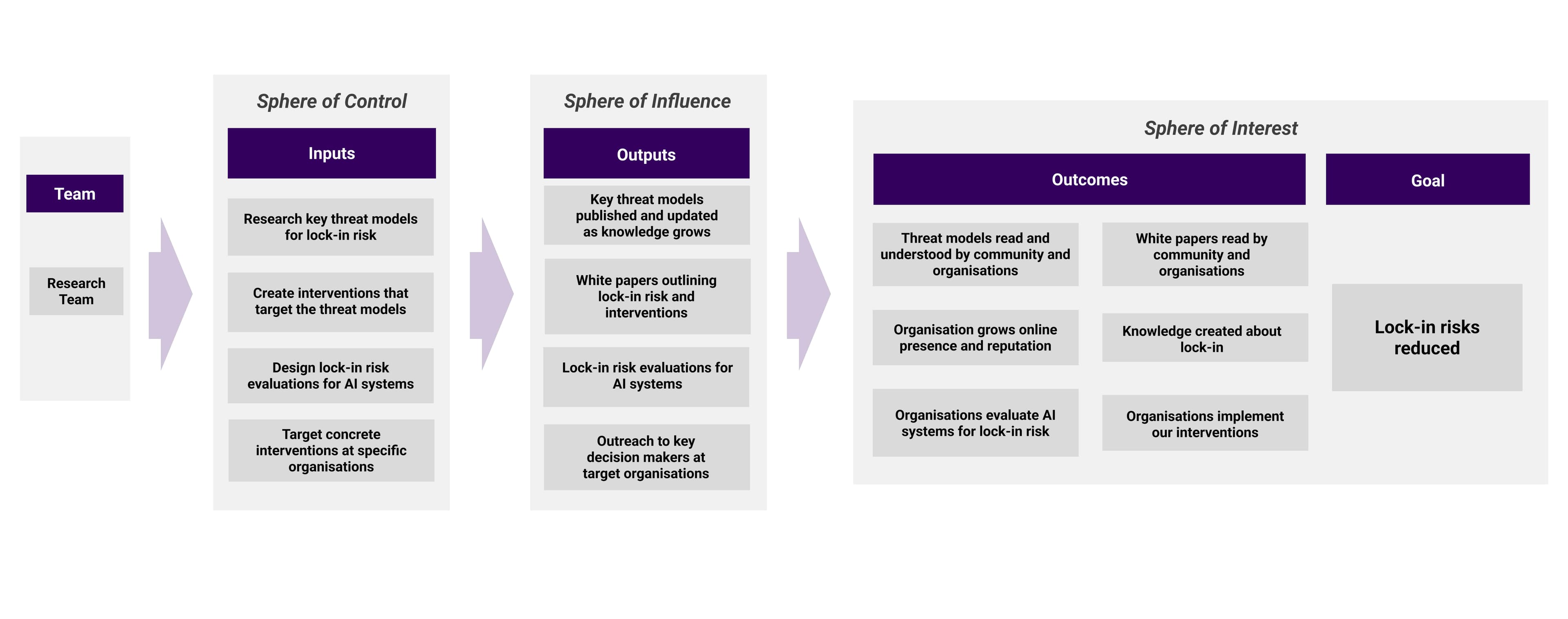
Theory of Change

Overview
This page outlines Formation's theory of change. The purpose of the theory of change is to specify the activities conducted by the organisation, the intended effects of those activities, and the justification for the belief that those activities will bring about those effects.
The structure of a theory of change typically consists of a team or set of teams, a sphere of control, a sphere of influence, a sphere of interest, and a set of assumptions and evidence. This theory of change is subject to change as we learn more about what inputs best bring about the outcomes we are aiming for — reduced lock-in risk.
Team
Currently Formation is composed of two members, Alfie Lamerton and Adam Jones. Alfie is Formation's founder and research lead and Adam is an adviser to the organisation.
Alfie is the sole researcher and therefore the only member of Formation's research team. It is expected that as the organisation evolves, more teams will be created that contribute to the sphere of interest. Those teams will be added as new rows to the theory of change by mapping the causal pathway backwards from the intended impact to team design.
Sphere of Control

The sphere of control contains the inputs of the organisation — the activities conducted by the research team.
Sphere of Influence

The sphere of influence contains the measurable effects of the activities conducted by the research team – these are Formation's outputs.
Sphere of Interest

The sphere of interest specifies the change the organisation is aiming to a effect in the world. It contains the outcomes (the intended effects of the outputs), and the goal (the main objective of the theory of change).